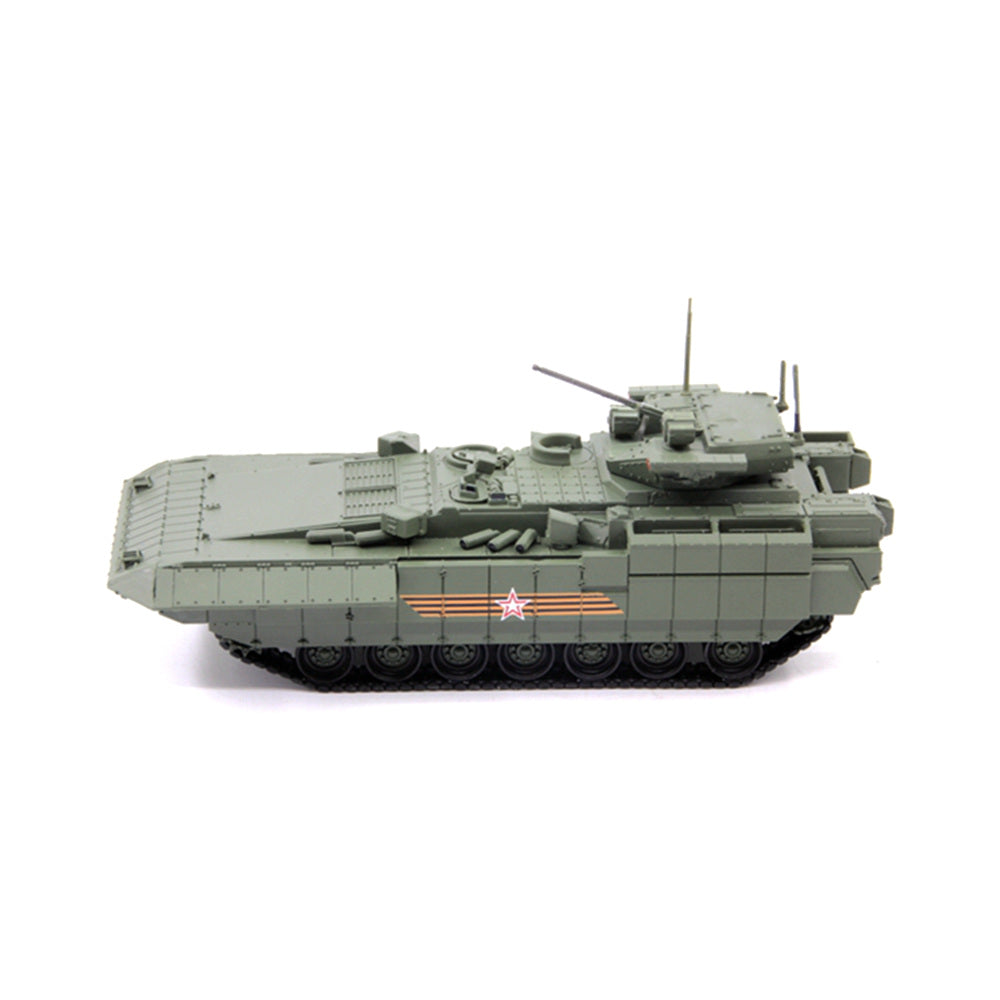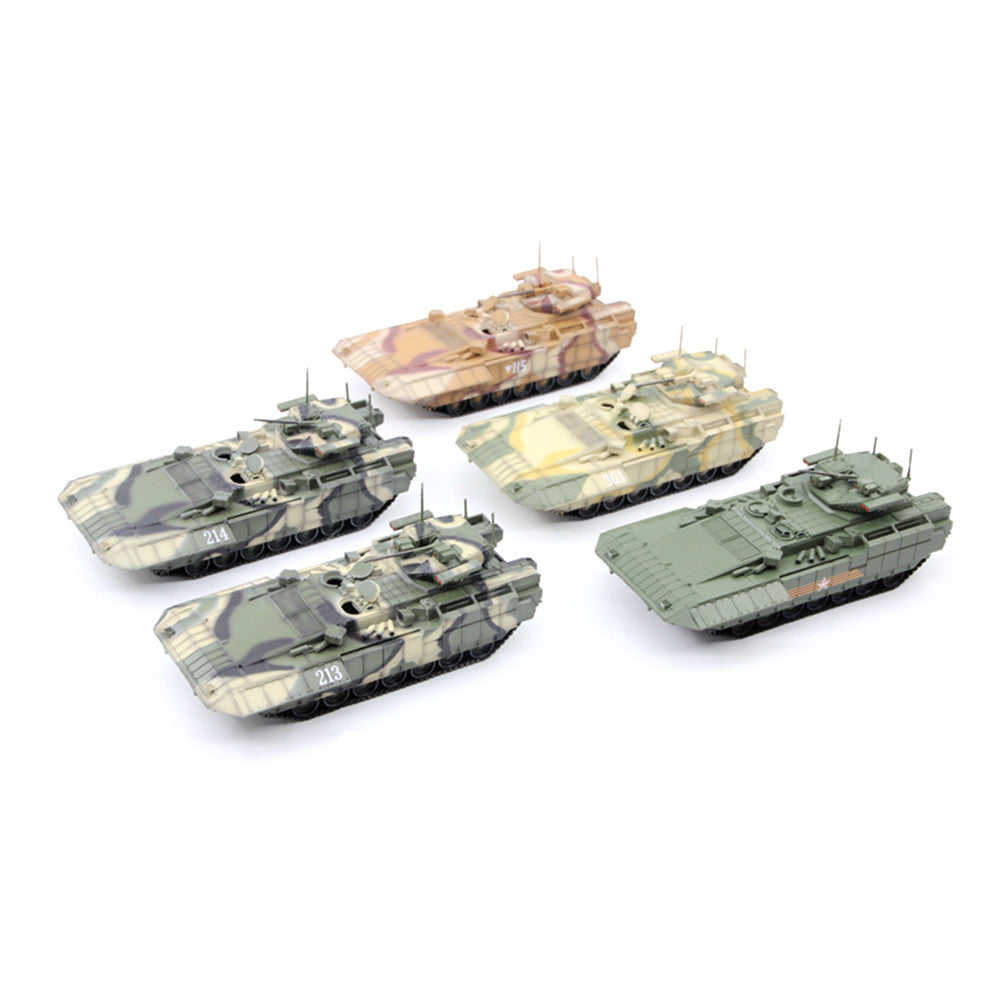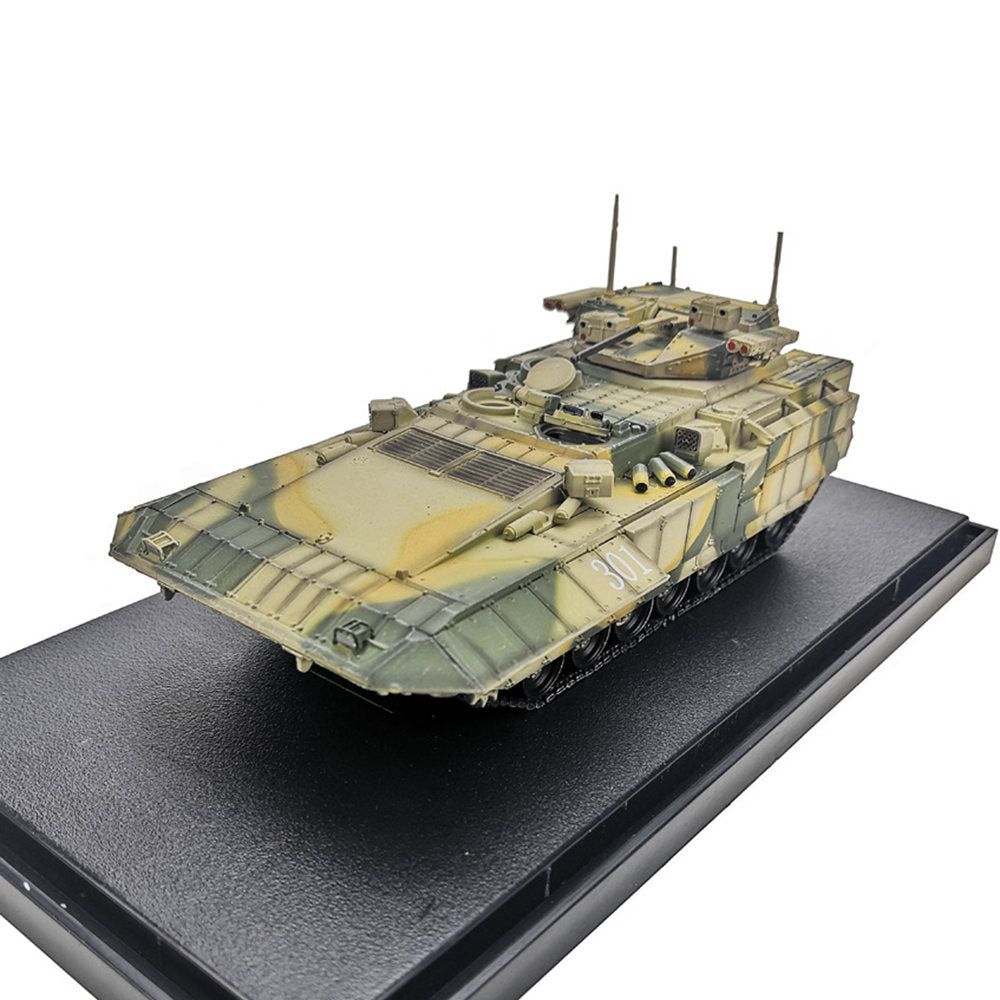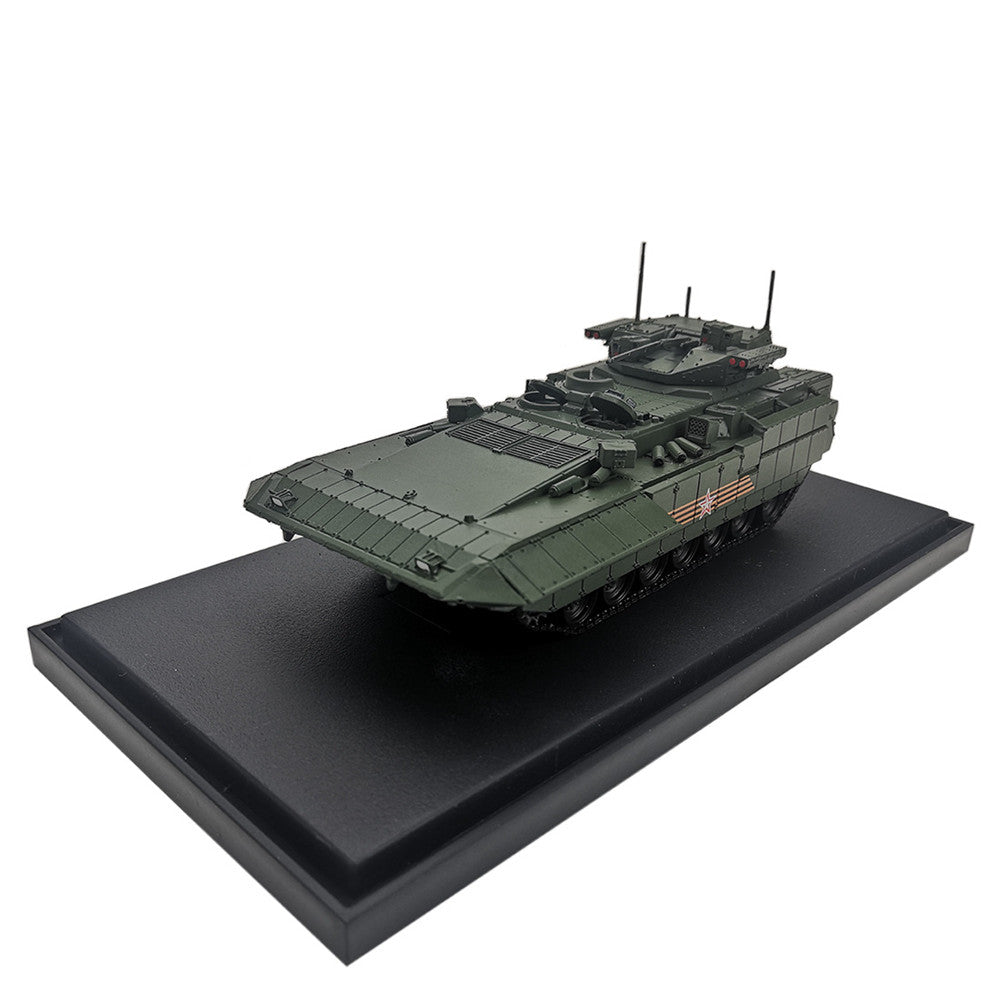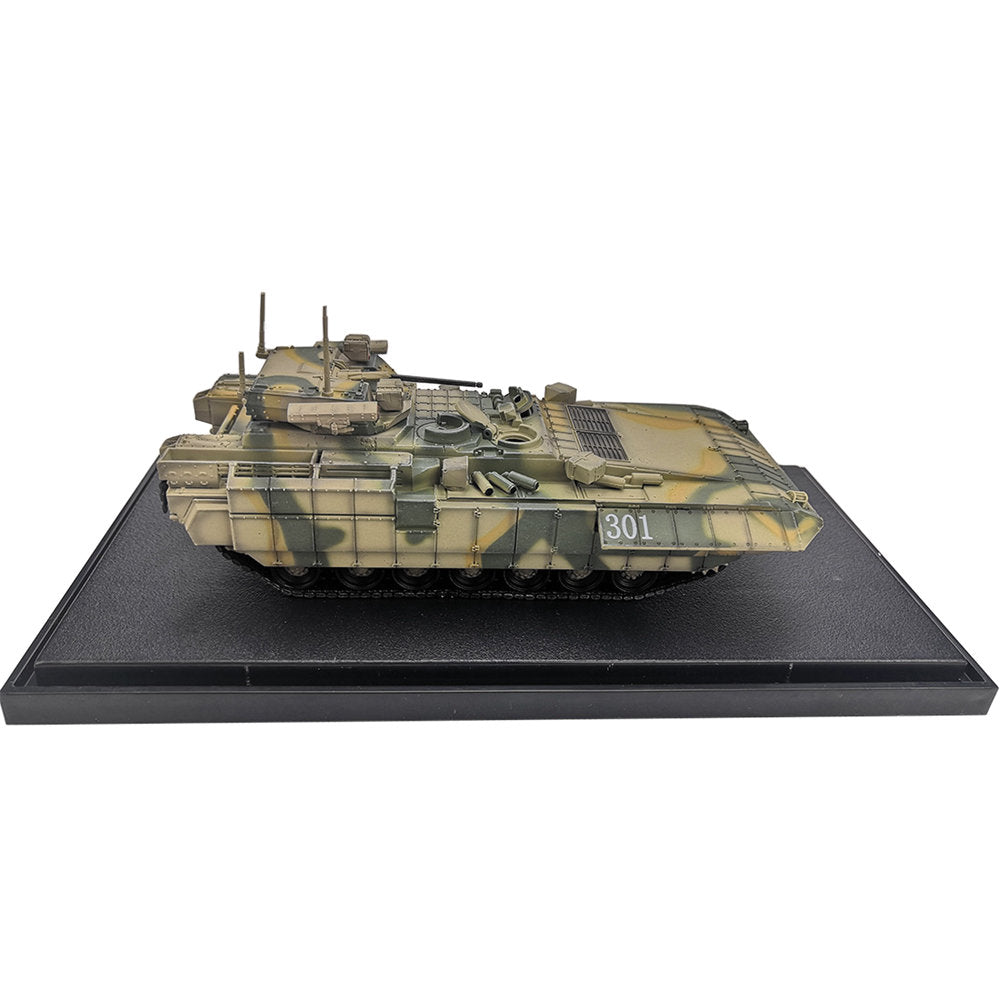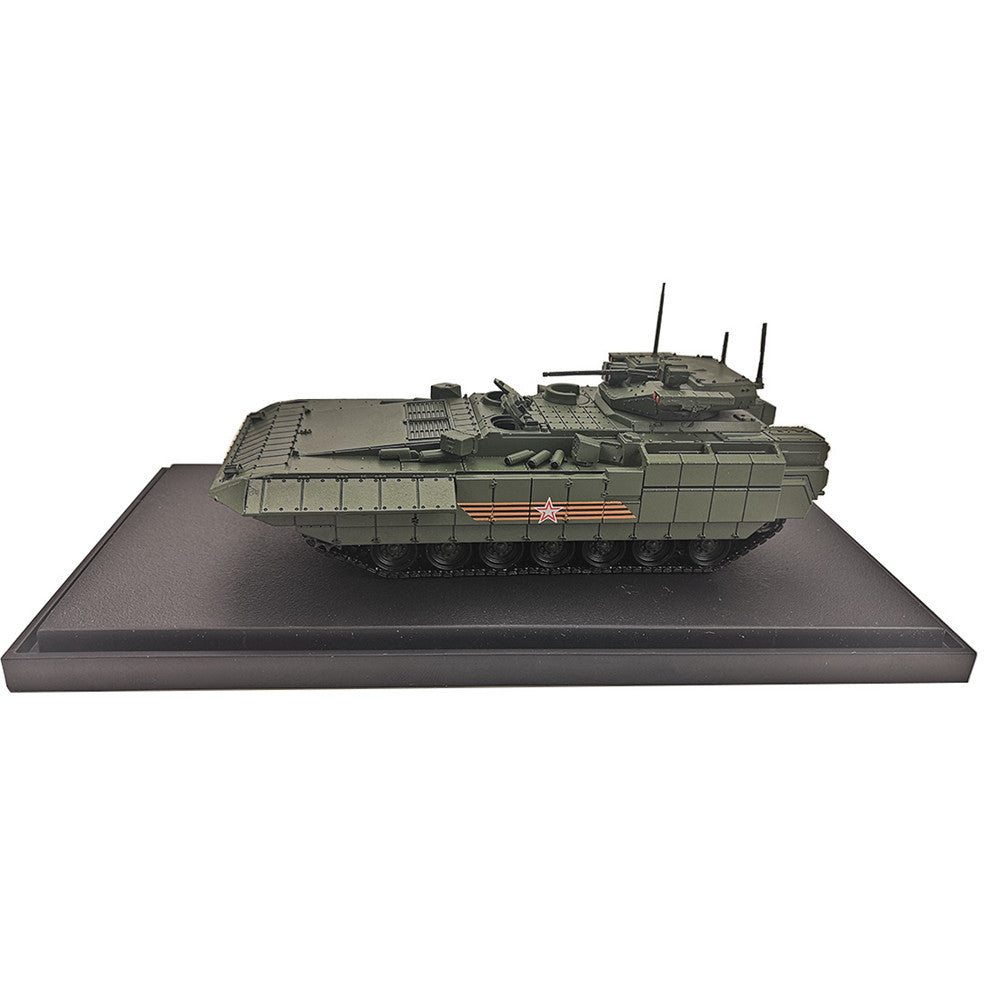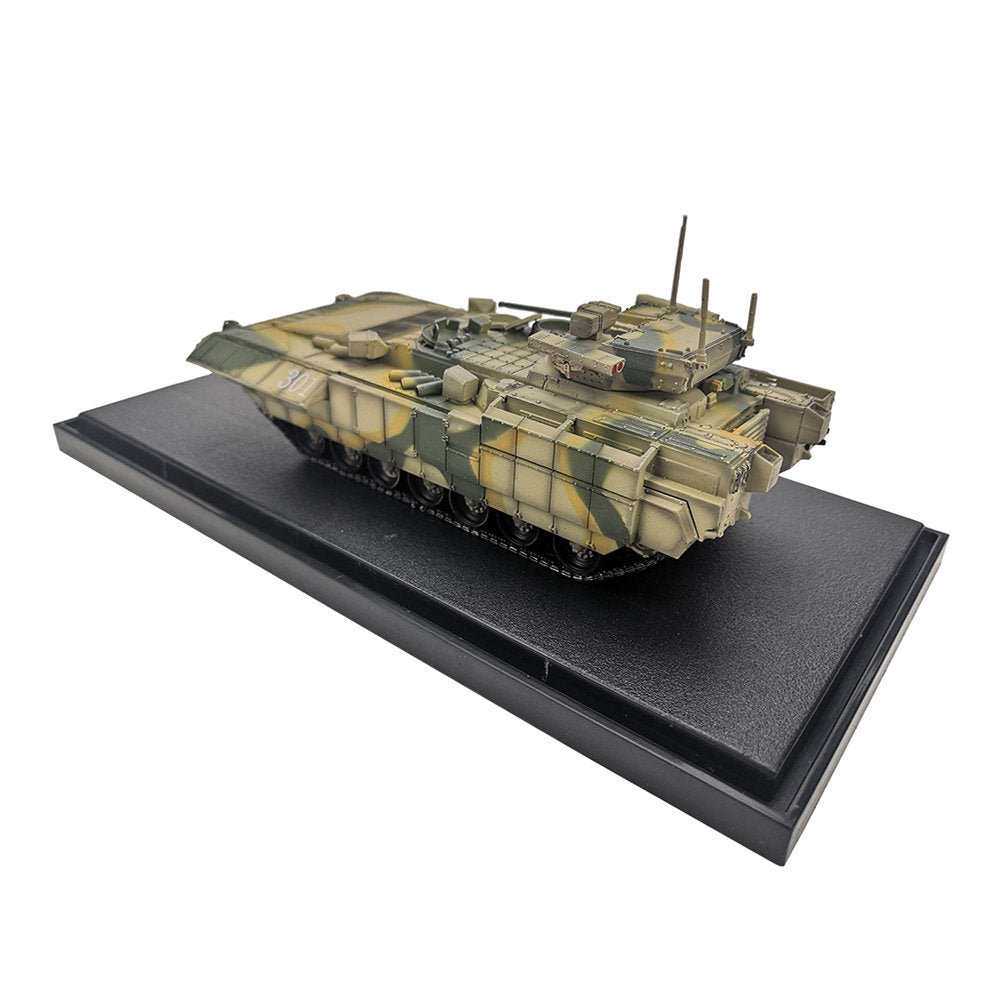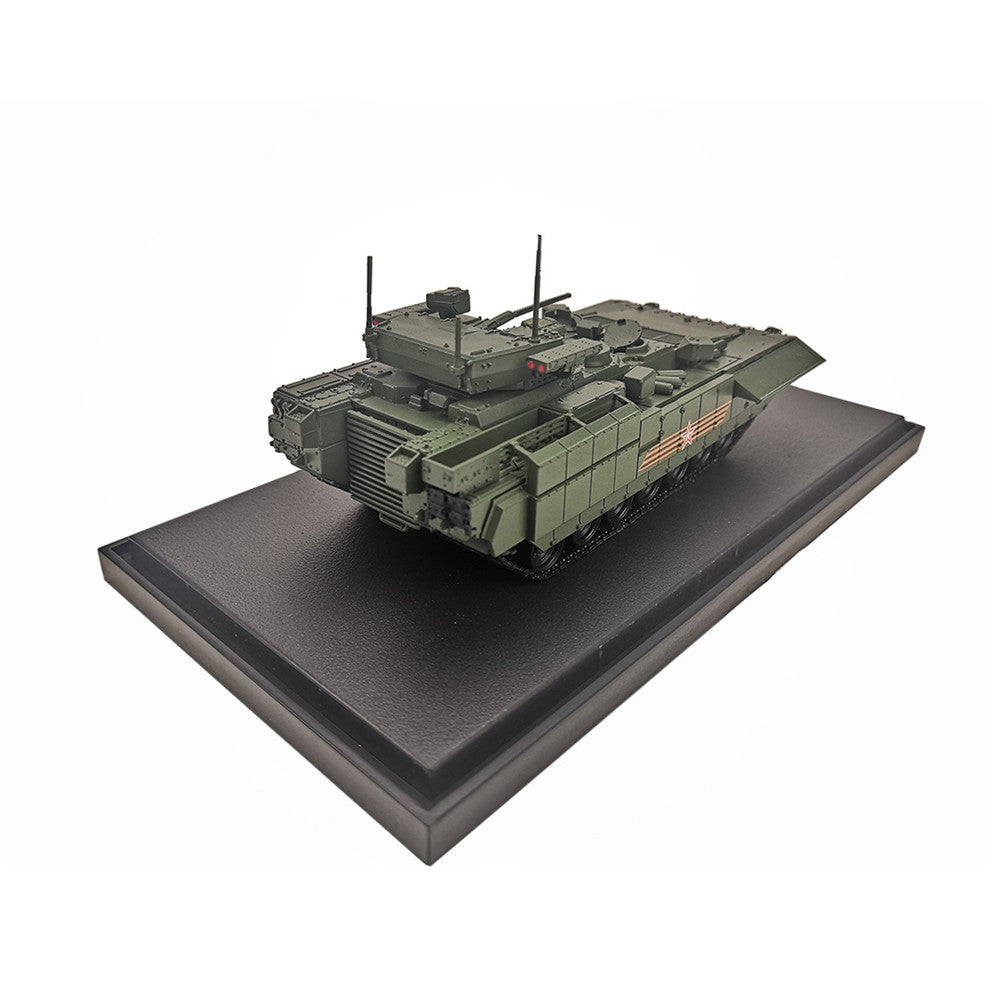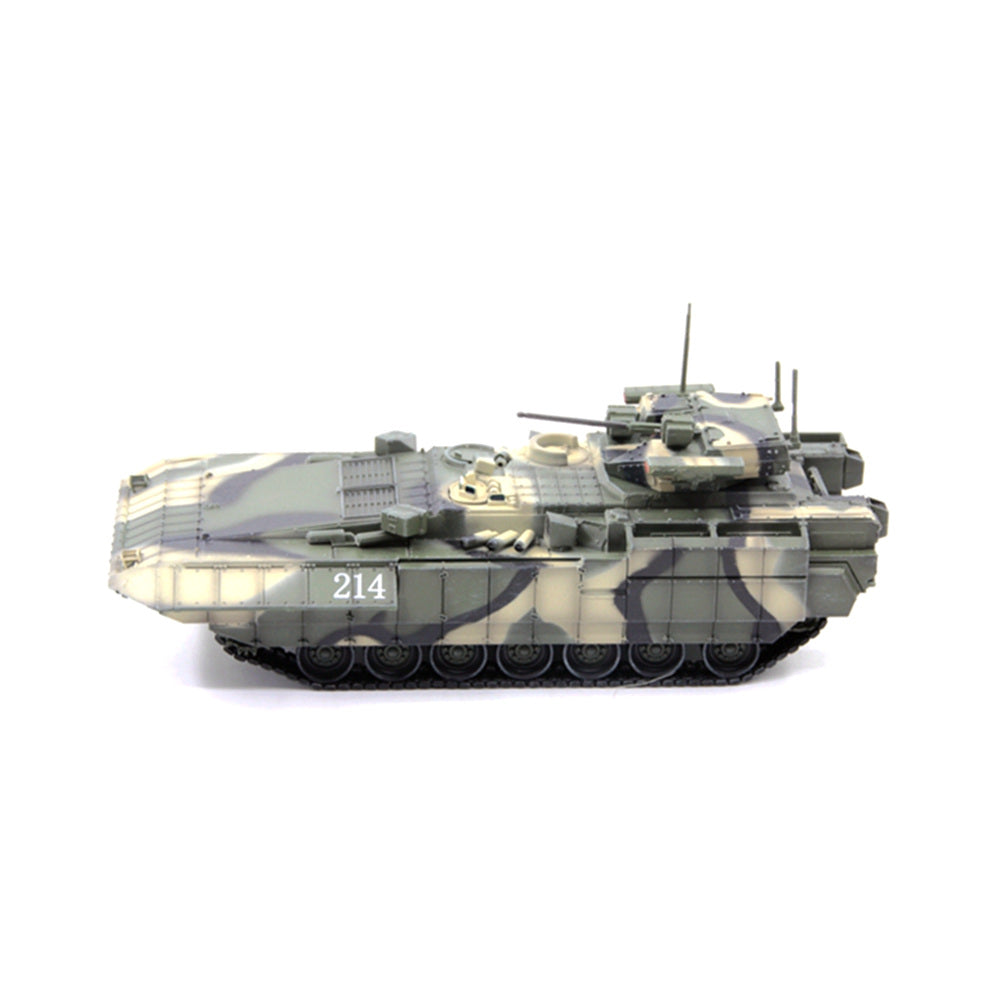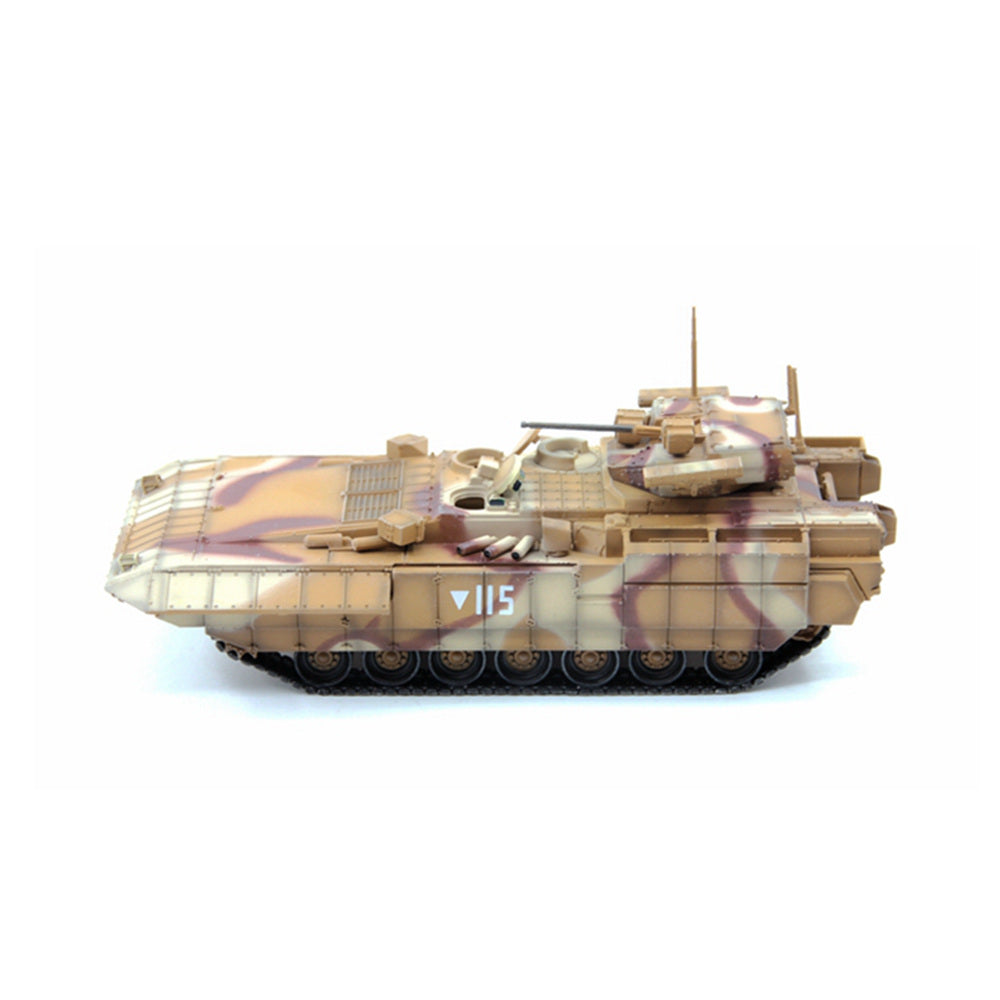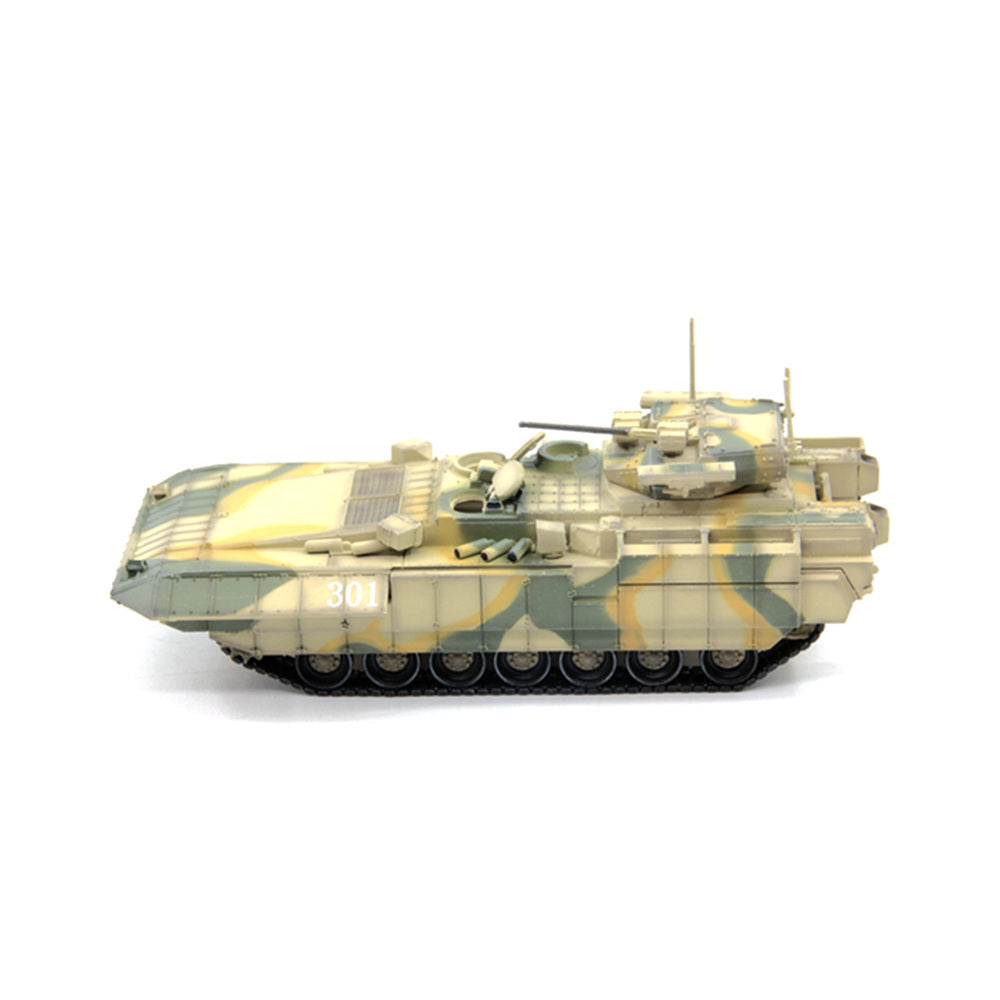old boy hobby
T-15 Armata Heavy Infantry Fighting Vehicle 1/72 Scale Diecast Model
T-15 Armata Heavy Infantry Fighting Vehicle 1/72 Scale Diecast Model
Couldn't load pickup availability
- diecast and pre-painted, ready to display
- material: metal & plastic
- scale: 1/72
The T-15 Armata (Russian: T-15 Армата), with industrial designation "Object 149", is a Russian heavy infantry fighting vehicle first seen in public (initially with its turret covered) in 2015 during rehearsals for the Moscow Victory Day Parade. The T-15 is expected to replace the BMP-2 and MT-LB based platforms of the Russian Ground Forces.
The infantry fighting vehicle concept was first conceived of in the 1960s during the Cold War, where a confrontation between NATO and Warsaw Pact countries was expected to be dominated by tanks, so infantry required transport to sustain the pace of advance while having armament to fight tanks, and armor to withstand machine gun and artillery fire; the Soviet Union created the BMP-1/BMP-2 and the United States the M2 Bradley. While IFVs provided troops with heavier mounted firepower, the prevalence of anti-tank rockets and guided missiles made it uneconomical to protect them from such weapons. Post-Cold War, rather than maneuver warfare, most fighting took place in urban areas, such as what the Russians experienced in Grozny. While heavy losses can be tolerated in a near-peer conflict, the ease at which insurgent ambushes using anti-tank weaponry can inflict casualties by targeting IFVs has become an issue for IFV operators. In an effort to field better protected troop carriers, some countries have experimented with converting tank hulls to carry dismounted infantry, such as Israel with the Namer.
The Russian T-15 is based on the T-14 tank hull, with its engine relocated to the front to accommodate a passenger compartment in the rear. This adjusted engine position provides additional crew protection against frontal attacks. Passenger capacity is estimated at between seven and nine troops. At 48 tons, the vehicle is slightly heavier than the T-90 main battle tank. It has several features, including a built-in entrenching blade and the T-14's numerous cameras and sensors.
--copied from Wikipedia
Share
